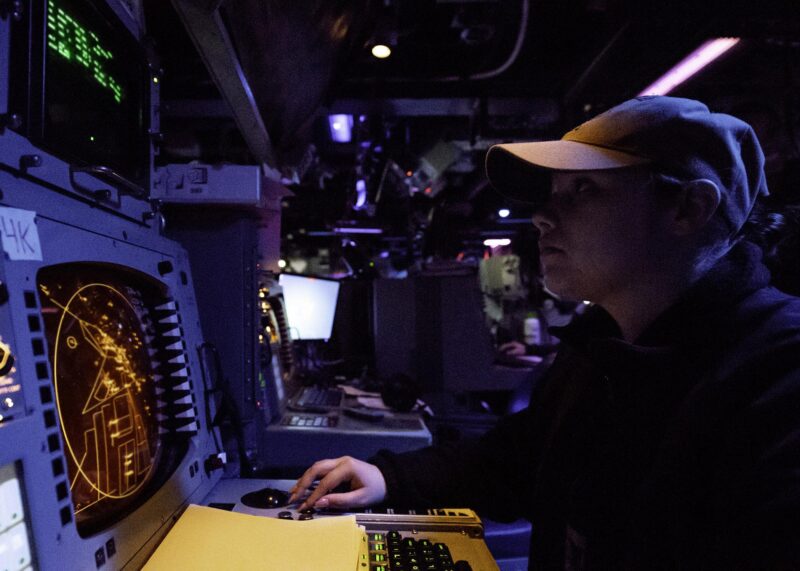
Operations Specialist 3rd Class Rikisha Cormier, assigned to the amphibious assault ship USS Boxer (LHD 4), identifies air contacts from the combat information center during a previous underway in the eastern Pacific Ocean. The new contract enhances the combat information center with the continued redesign of the AN/UPX-50(C) digital interrogator assemblies.
NAVAL AIR SYSTEMS COMMAND, Patuxent River, MD: The U.S. Navy awarded a $24 million contract to BAE Systems for the continued redesign of the AN/UPX-50(C) digital interrogator assemblies.
The cost-plus-fixed-fee contract is a modification to a previously issued basic ordering agreement to address parts obsolescence and implement solutions to achieve compliance with the latest specifications, qualification and certification standards for the Navy.
Additionally, this order adds tasking for the integration of Target Report Processing capabilities into the Common Core DI, formerly hosted in the Interrogator Set, AN/UPX-24(V).
The redesigned interrogator features a common modular design and systems architecture that allows for customized configurations and performance optimization. The design of this next generation interrogator allows for faster updates to Identification Friend or Foe technology in air defense, weapon systems, air traffic control and range instrumentation for several decades.
Work is scheduled to be complete in late 2026.
Key Features and Functions of the AN/UPX-50(C) Digital Interrogator Assemblies:
Identification Friend or Foe (IFF) Capability: The primary function of the AN/UPX-50(C) is to send out interrogation signals and receive responses from aircraft equipped with IFF transponders. The responses help determine whether the aircraft is a friendly or potentially hostile entity.
Digital Technology: The “(C)” in the designation often indicates a specific configuration or version of the equipment. In this case, the AN/UPX-50(C) uses digital technology, which improves the accuracy, reliability, and speed of processing IFF signals compared to older analog systems.
Integration with Radar Systems: The AN/UPX-50(C) is integrated with various radar systems on ships, aircraft, and ground-based platforms. It works alongside these radars to provide comprehensive situational awareness and enhance the ability to track and identify aircraft.
Modes of Operation: The interrogator supports multiple IFF modes, including Mode 1, Mode 2, Mode 3/A, Mode C, and Mode 5. Each mode provides different levels of security and information exchange, with Mode 5 offering the most advanced encryption and secure communication capabilities.
Enhanced Security and Encryption: Mode 5 IFF is a significant feature of modern interrogators like the AN/UPX-50(C). It includes encrypted responses to prevent adversaries from spoofing friendly aircraft, thereby enhancing security in combat zones.
Built-In Test Equipment (BITE): The AN/UPX-50(C) typically includes built-in test equipment, allowing for self-diagnosis and troubleshooting to ensure the system operates correctly and reliably.
Versatility and Upgradability: The design of the AN/UPX-50(C) allows it to be upgraded or modified to meet evolving requirements, such as new IFF standards or integration with future radar systems.
Overall, the AN/UPX-50(C) digital interrogator assemblies are crucial for maintaining airspace security and ensuring effective communication and identification of friendly forces in military operations.


